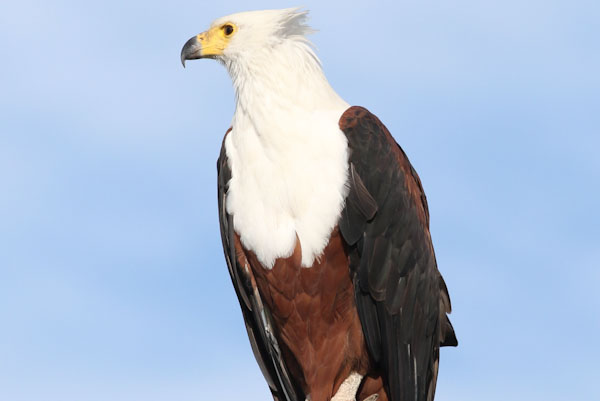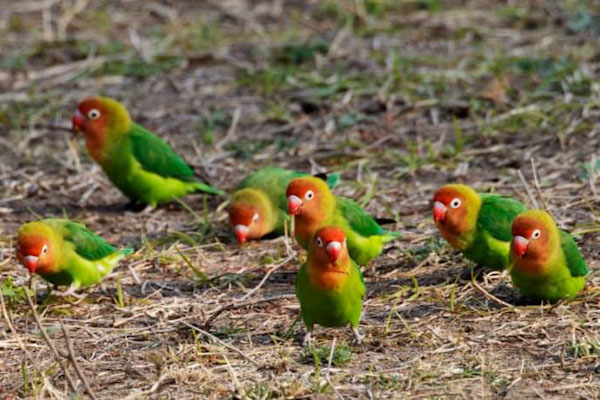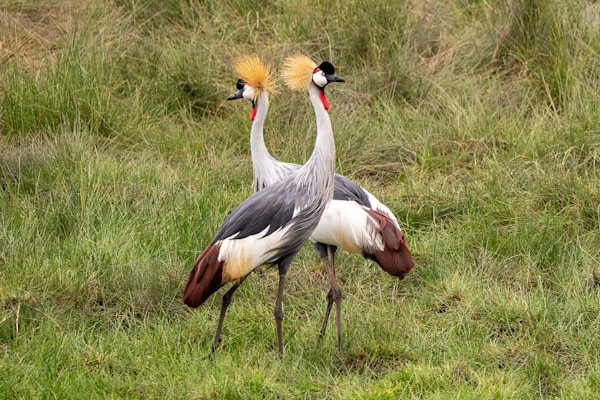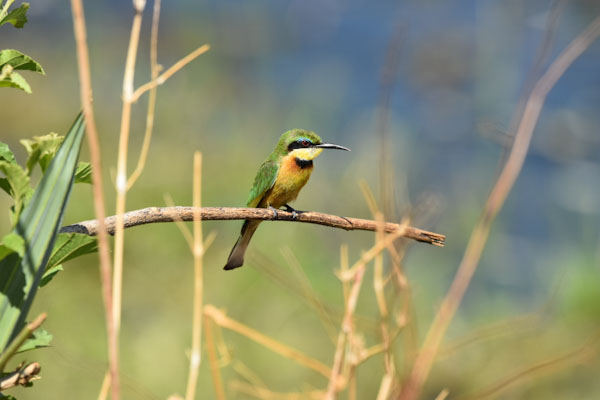Feathered friends of Tanzania
Welcome to Tanzania, where national parks and game reserves abound! This is a birdwatcher’s paradise, and we’re sure you’ll have a wonderful time spotting all the different species. You’ll be amazed Tanzania is home to nearly 1.200 different types of bird. Of these, 34 species are restricted to a small geographic area. No matter where you go in Tanzania, you’ll always be able to hear the beautiful sound of birds singing and the fluttering of their wings. It’s really great to see that there’s been so much more research into birds in Tanzania in recent decades. This has meant that there’s now loads of information and resources available about our feathered friends.
Tanzania is a great destination for travellers all year round. Its birdlife can be enjoyed at any time of year thanks to its varied geographical elevations and micro-climates. Tanzania experiences two main seasons: dry and rainy. The rainy season starts in early March and continues until late May.
The best time to visit Tanzania for birdwatching is generally from November to early April. Along with the native Tanzanian birds, visitors can also see diverse migratory birds from Europe and Northern Africa during this season. This is the nesting and breeding season for resident Tanzanian birds.
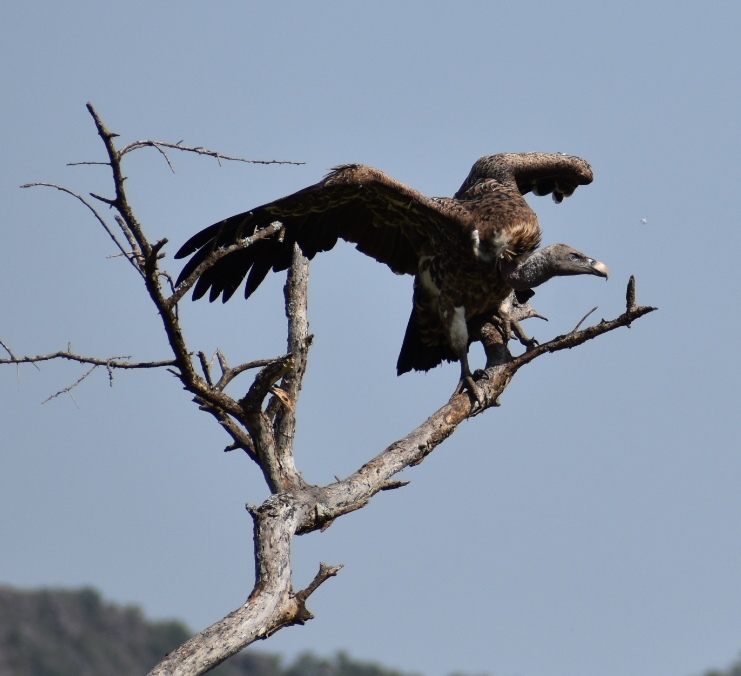
Arusha National Park
is located in north-eastern Tanzania, is home to vast grassy hills surrounded by the Momella lakes. The waters of the Momella lakes and the surrounding grasslands host a diverse range of birds. The park as a whole is home to around 400 species of bird, including endemic, forest, aquatic and migratory species.
Common birds in the park include the pink flamingo, narina trogon, spur-winged goose, red-fronted parrot, African fish eagle and shaggy waterbuck. The best ways to enjoy birdwatching in Arusha are on game drives, while climbing Mount Meru, on a canoe trip on the lake or on a nature walk.
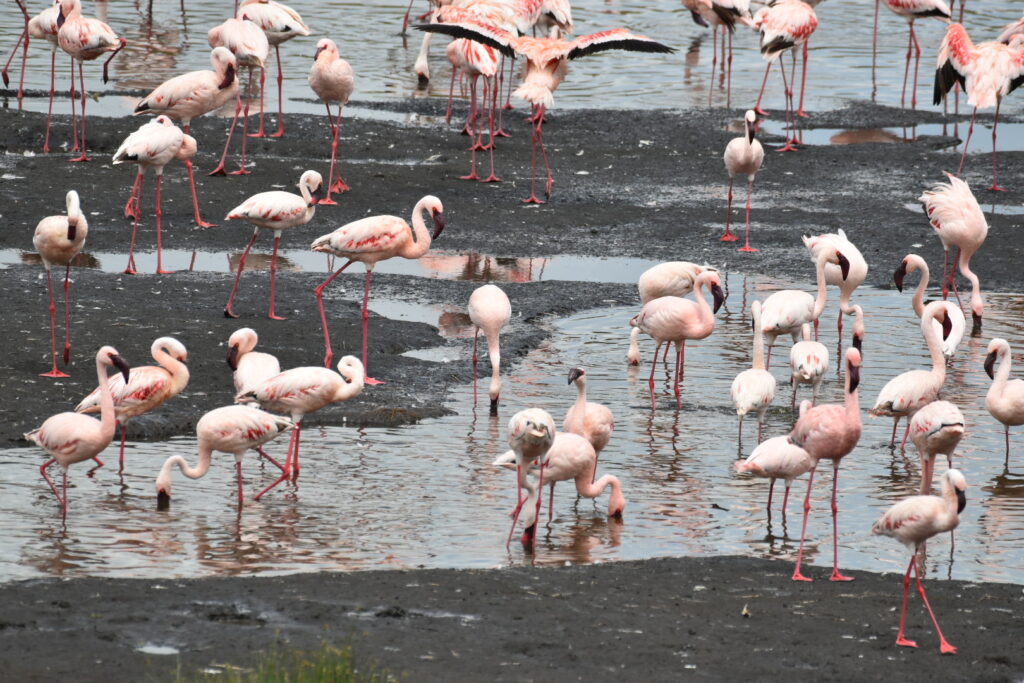
Serengeti National Park
Serengeti National Park, probably the most famous national park, is located in northern Tanzania. It is home to one of the world’s oldest ecosystems. It is renowned for its abundant wildlife and the spectacular wildebeest migration. Apart from the migration and the large mammals, the park is also a paradise for birdwatchers, hosting nearly 500 species of bird, including a few that are endemic to the Serengeti.
Common species you will find in the Serengeti include Secretary bird, African fish eagle, Grey-breasted spurfowls, grey-crested helmet shrikes and Fischer’s lovebirds, among others.
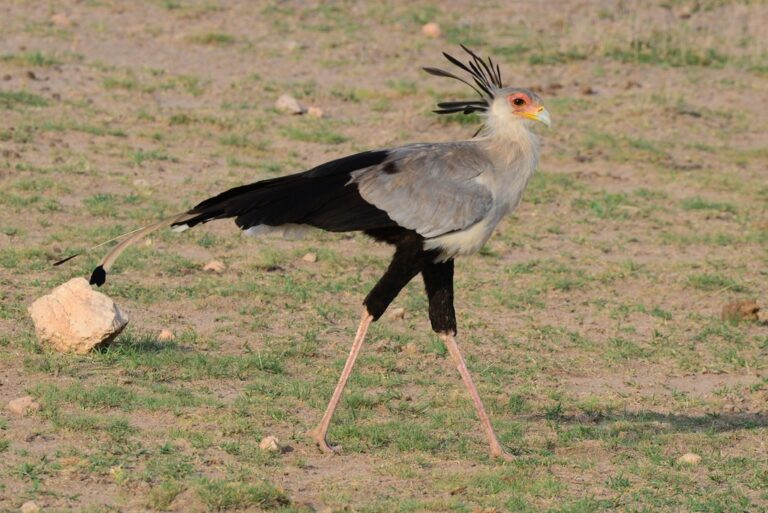
Tarangire National Park
Tarangire National Park has lots of endemic and near-endemic species, and birds everywhere you choose to go and holds three endangered bird species of Tanzania: Rufous-tailed weaver, Ashy starling and Yellow-collared Lovebird.
The swampy floodplains in Tarangire’s southern and eastern part are important grounds for the Eurasian migrants. Tarangire’s woodlands are inhabited by Hoopoes, Hornbills, White-bellied Go-away-bird and Brown parrots. Commonly seen birds are also Lilac-breasted rollers, barbets and mousebirds, striped swallows and starlings, swifts, hammerkops, bee-eaters, cordon bleus and owls.
Interesting birds are Double-banded Courser, White-headed Buffalo-Weaver, Greater Painted Snipe, Mottled Spinetail, Southern Ground Hornbill, Meyer’s Parrot, Bearded Woodpecker, Miombo Wren-warbler and Green Wood-Hoopoe.
Best time for birding in Tarangire National Park is during the wet season, from November to April when European and North African migratory birds are present in the park.
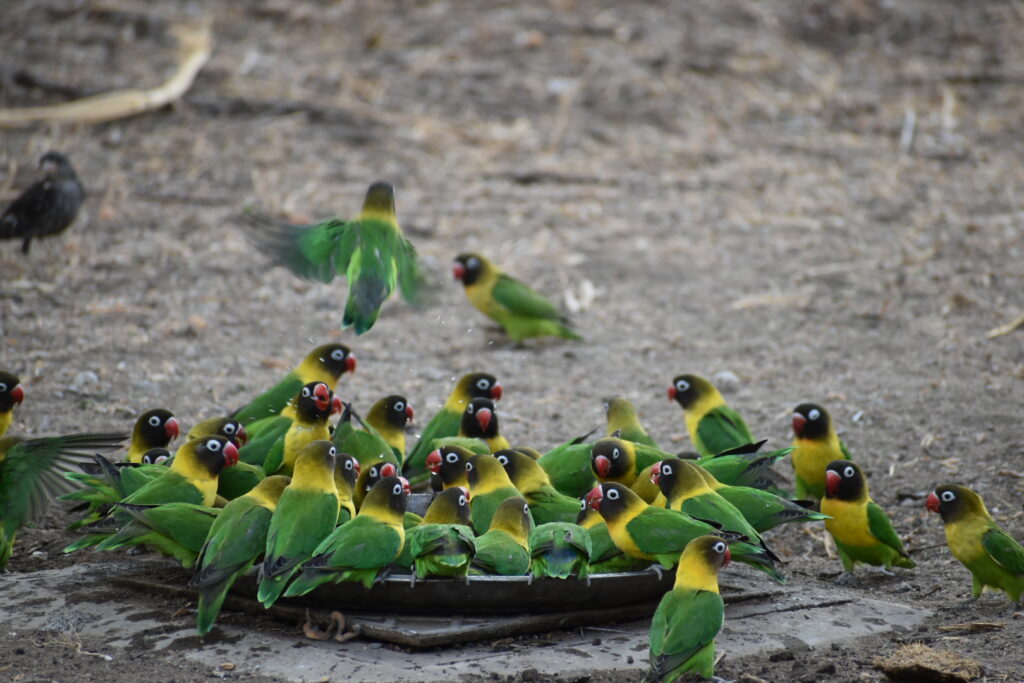
Ngorongoro Conservation Area
The Ngorongoro Highlands and Crater are beautiful places for birdwatching, being home to more than 500 species. As well as the native birds, bird enthusiasts can also find many migratory species in the Ngorongoro Conservation Area. These birds migrate from Europe and Asia between September and April. Throughout the different seasons, you can see a variety of bird species in the Ngorongoro area.
The main migratory birds are the European bee-eater, lesser kestrel, European roller, Caspian lapwing and pallid harrier. The nests of ostriches, secretary birds and kori bustards on the sand tracks around the crater are easily distinguishable. Other species you may see include the Northern Anteater Chat, Capped Wheater, Fischer’s Sparrow-Lark, Rufous-tailed Weaver, Superb Starling and Grassland Pipit.
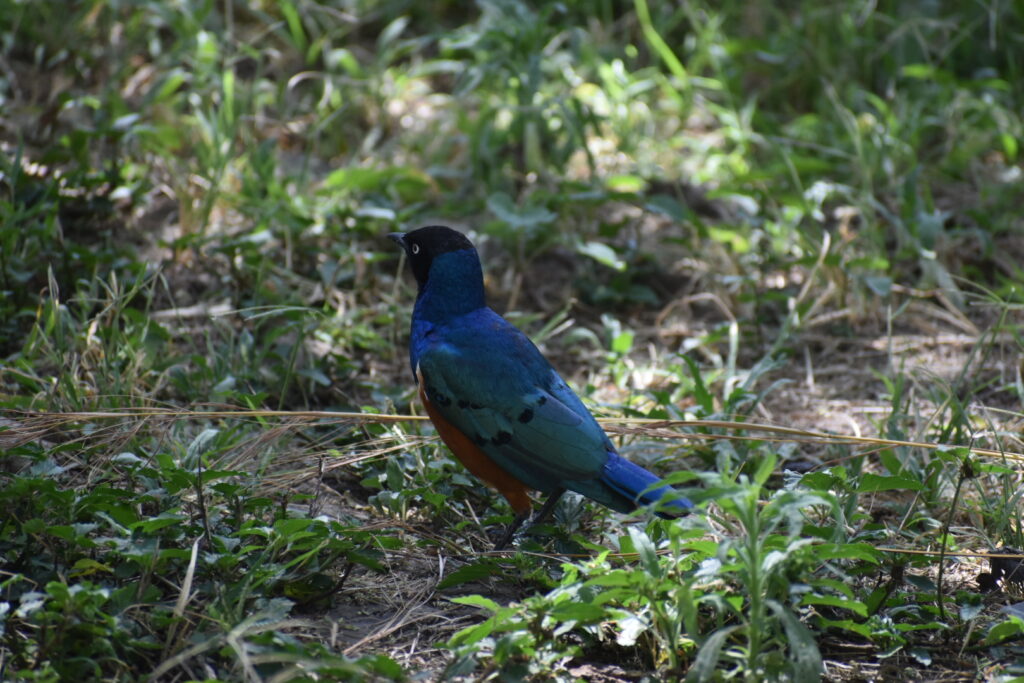
Lake Manyara National Park
is the smallest in the area, located at the base of the Great Rift Valley and alongside the famous Ngorongoro Conservation Area and Serengeti National Park. The main attraction for birdwatchers at Lake Manyara is the flamingos. At certain times, they cover two-thirds of the lake, creating a beautiful sight. As well as the famous flamingos, Lake Manyara is home to more than 400 bird species, including aquatic, migratory and prey birds.
Common species around the lake include the pink-backed pelican, pied kingfisher, saddle-billed stork, grey-crowned crane, narina trogon and silvery-cheeked hornbill and check out out the crested guinea fowl.
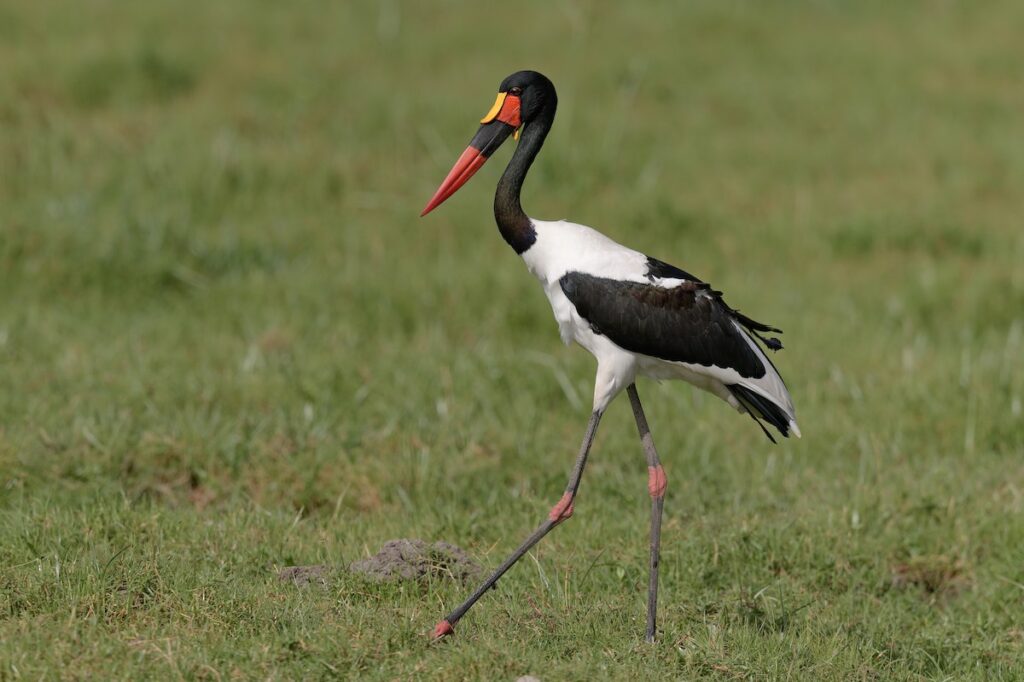
These are the best places for birdwatching in Tanzania. However, Tanzania’s birdwatching opportunities are not limited to these locations. To have a good birdwatching experience, you can also visit the following places: Lake Victoria, Nyerere National Park, Udzungwa Mountains National Park and Amani Nature Reserve.
Beyond the Big Five you’ll see on Safari..
SECRETARY BIRD
The secretary bird’s English name was once thought to come from the 1800s, when Europeans first spotted these birds. Back then, male secretaries wore gray tailcoats and dark knee-length pants. They also used goose-quill pens that they carried behind their ears. This long-legged bird shares many of these same physical features: long, dark quills at the back of the head; long, gray wing and tail feathers that resemble a tailcoat; and black feathers that go midway down the legs like short pants. It’s fun to imagine how the two “secretaries” compare!
Secretary birds are distantly related to buzzards, vultures, harriers, and kites. But unlike their raptor cousins, secretary birds spend most of their time on the ground.
But can they fly? Of course! They may spend their days on the ground, but secretary birds are good fliers and nest and roost high up in acacia trees at night. In flight, their long legs trail behind them in the air.
Secretary birds is a terrestrial bird of prey, hunting for their food on foot. Adults are often seen working in loose pairs, or even small family groups, stalking through grass in search of small mammals, reptiles, birds, and large insects. They are well known for their ability to catch and kill snakes of all sorts, even venomous ones! Secretary birds are clever enough to take advantage of recent fires, scavenging throughout the burn site for small prey that were unable to escape the blaze.

Maasai Ostrich
The ostrich is instantly recognisable and enormous. It is prevalent throughout Tanzania. These flightless birds can run at speeds of over 43 miles per hour, making them the fastest birds on land. Female ostriches have grey-brown plumage for good daytime camouflage, while male ostriches have black feathers for stealth at night.
Ostriches make a variety of sounds, including snorts, whistles, and loud booming noises, to alert each other to predators. You are more likely to hear them than see them!
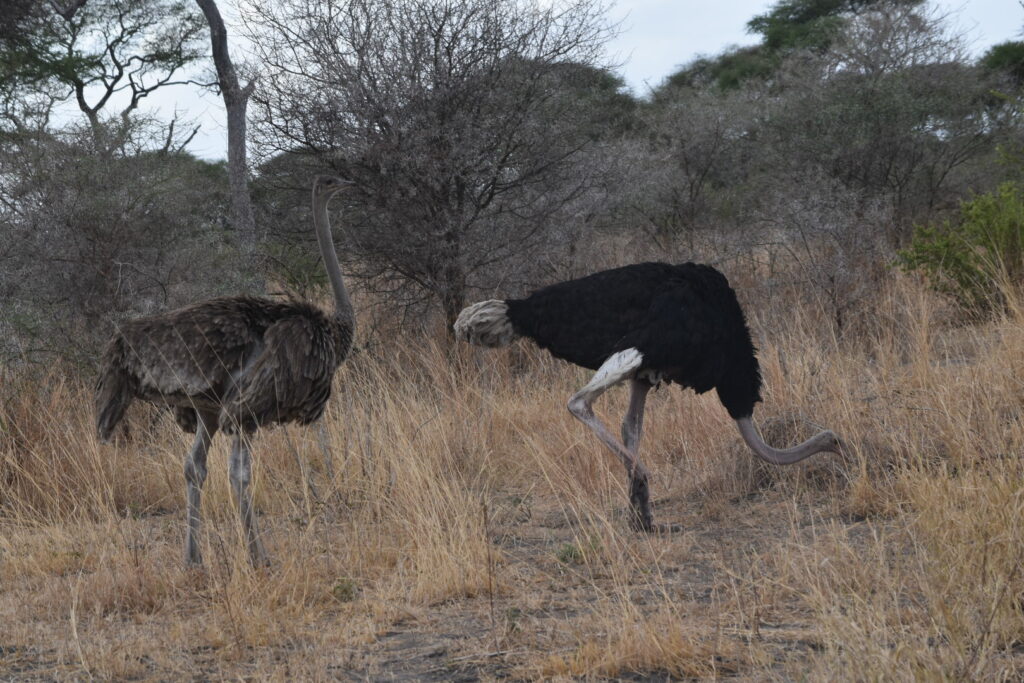
KORI BUSTARD
The largest flying bird is widely distributed throughout eastern and southern Africa. It can weigh up to 18 kg and grow to a height of 120 cm. They have a long neck and yellow legs, beaks and feet. A grey marking without white spots is present under their wings. Their tail has black and white bands. Male and juvenile Kori bustards can be distinguished by their dark mantle and shorter head crest.
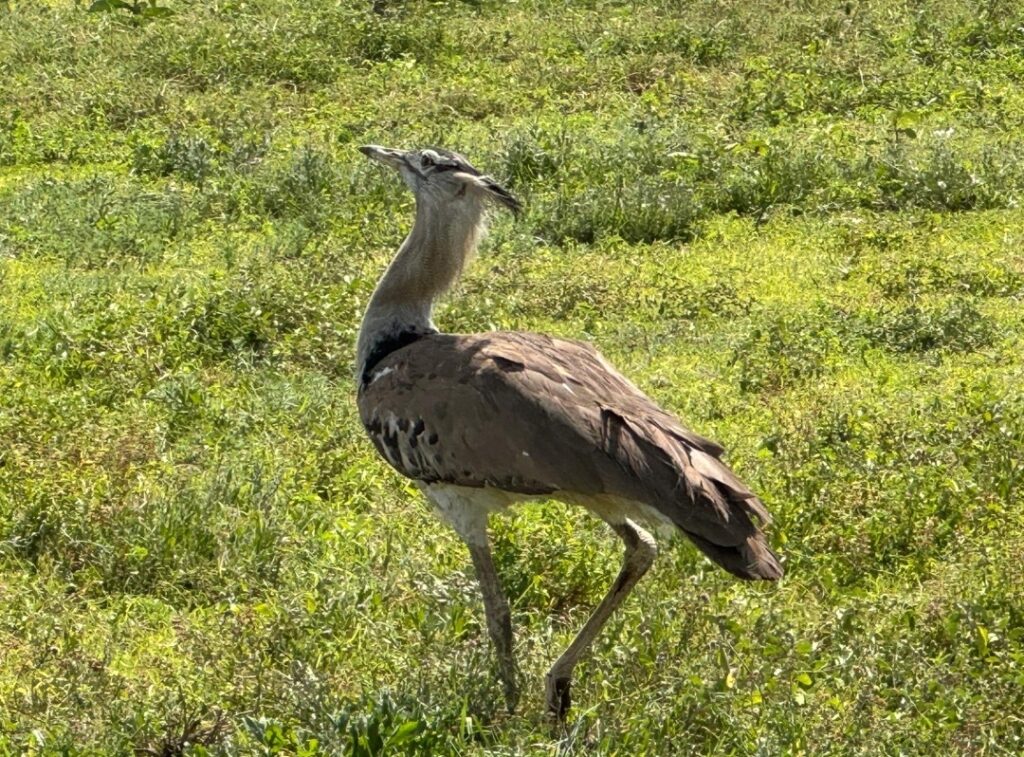
Ground Hornbill
The southern ground hornbill is the largest species of hornbill in the world and is only found in Africa. It is one of the “big six” birds of Africa. They inhabit both savannah and woodland areas. Southern hornbills are hunters and feed on insects and small animals, mainly on the ground. They live for between 50 and 60 years. The colour of their throat distinguishes between the male and female hornbills – the male’s throat is pure red, whereas the female’s is a deep violet-blue.

Marabou Stork
Tanzania is home to eight species of stork, including migratory species. The most common species is the marabou stork. This species is the largest stork, standing up to 5 feet tall. A striking physical feature of storks is the lack of feathers around their neck and head. Marabou storks are usually grey and white, with a pinkish neck and head and a red throat pouch. They are mainly found in flocks, except during the breeding season.
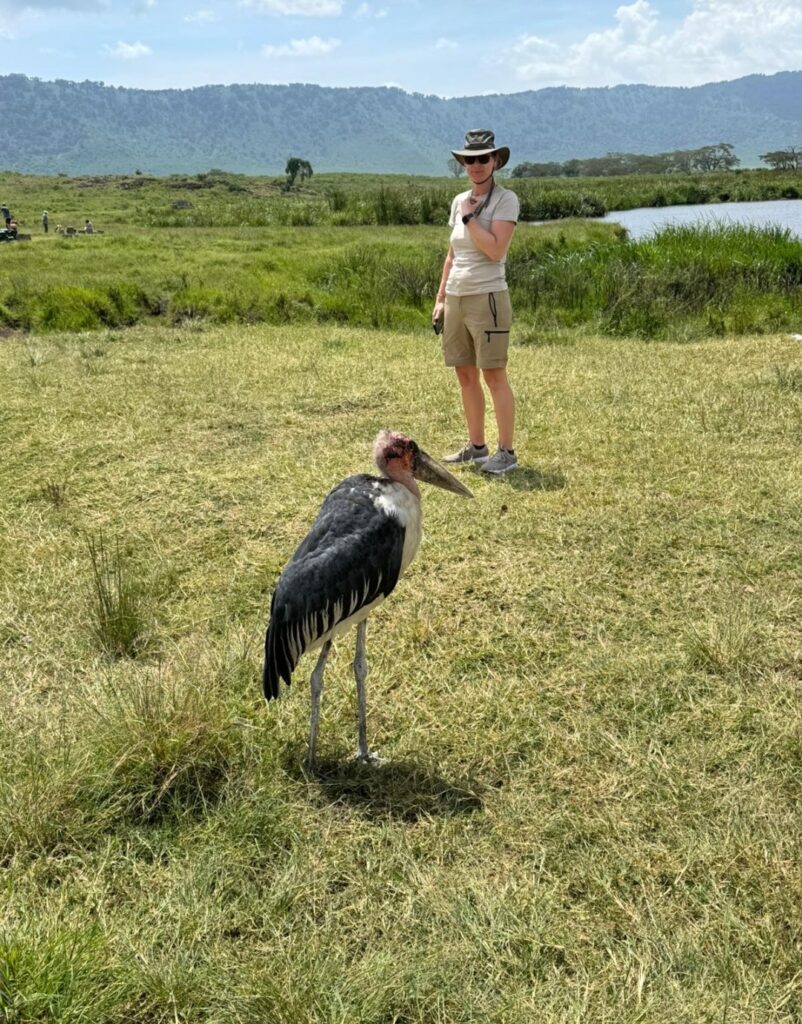
Lilac breasted roller
This bird, which belongs to the roller family, is famous across sub-Saharan Africa. In Swahili, it is called ‘Kambu’. It performs acrobatic flight displays which include rolling from side to side – hence the name. Its bright plumage and colourful tail make it stand out, and it is very popular, even among visitors who are not particularly interested in birds. They are territorial and fiercely protect their nests. They lay two to four white eggs, and both parents incubate them for 22–24 days. This brightly coloured bird has a greenish head, a blue belly and lilac and brightly coloured wing and tail feathers.
Lilac-breasted rollers mainly feed on insects such as beetles and grasshoppers, but will also occasionally eat small rodents or reptiles such as lizards and chameleons. They have also been observed feeding on tiny snakes in the Serengeti. Lilac-breasted rollers are often seen soaring high in the sky before diving and flying in loops and then perching in the treetops.
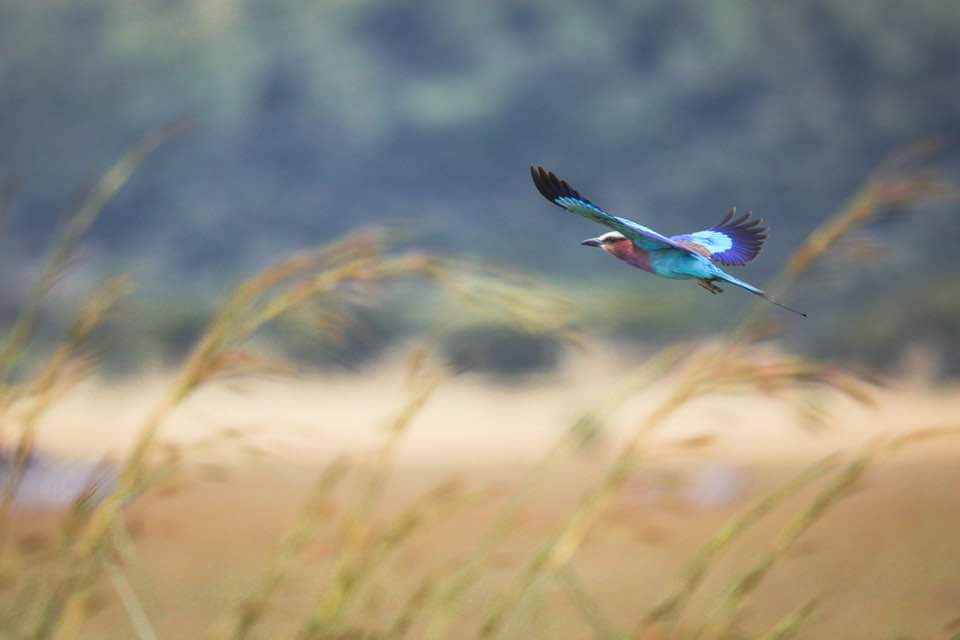
Masked Weaver
The masked weaver belongs to the “small birds” of Tanzania and is predominantly found in southwestern Tanzania. The Vitelline Weaver is characterised by its chunky bill. Male breeders have a dark bill, red eyes and yellow plumage. They are comparatively brighter in colour than non-breeding males, females and juveniles. Another striking characteristic of weavers is their intricate nest-making technique. They are famous for their elaborate, ball-shaped nests.
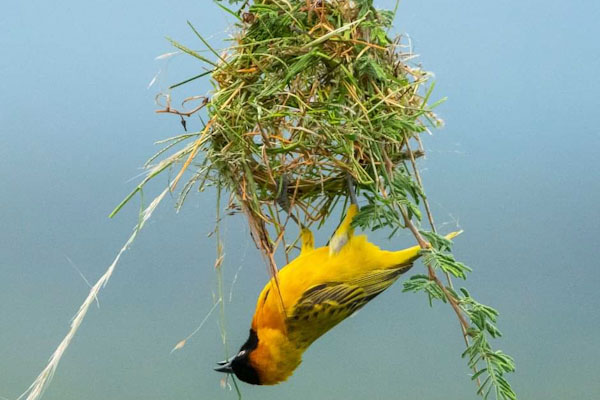
Tawny Eagle
The short-legged, heavily feathered Tawny Eagle is found almost everywhere in Tanzania. They are formidable hunters, diving from their perches to seize prey with their sharp talons. They are not fussy eaters, either, and are known to snack on insects when given the chance.

Grey Crowned Crane
The striking grey-crowned crane lives in the heart of the Serengeti, favouring flooded grasslands and open habitats when foraging. Males are renowned for their elaborate courtship dance, during which they flap their colourful wings and skip around to attract potential mates. Despite their name, their ‘crown’ is always golden-yellow!

Tanzanian red-billed hornbill
The Tanzanian Red-Billed Hornbill is found in open, wooded savanna with sparse groundcover, especially areas heavily trampled by game or livestock. It feeds mostly on insects, small mammals, and, rarely, on seeds and fruit. They are common on alluvial flood plains, where there are occasional large trees, and in Mopane woodland. They wander into more open habitats during the dry season.

Birdwatching in Tanzania is guaranteed to create some of the best memories. The passion for birdwatching unites bird enthusiasts. The various national parks, lakes and volcano craters develop a variety of micro-climates that allow wildlife to flourish. You should plan a distinguished and personalised safari with us if you’re considering a solo, family or honeymoon trip. This way, you can traverse Tanzania to see some of the best endemic and native birds.
So get in touch!

